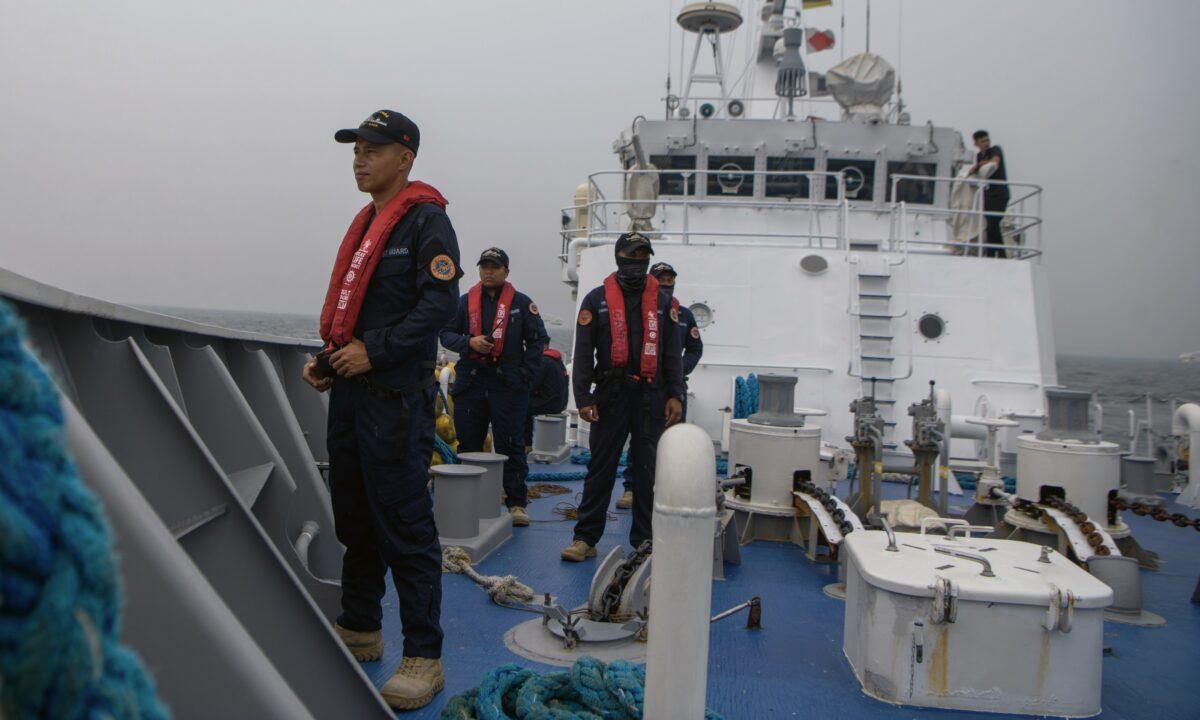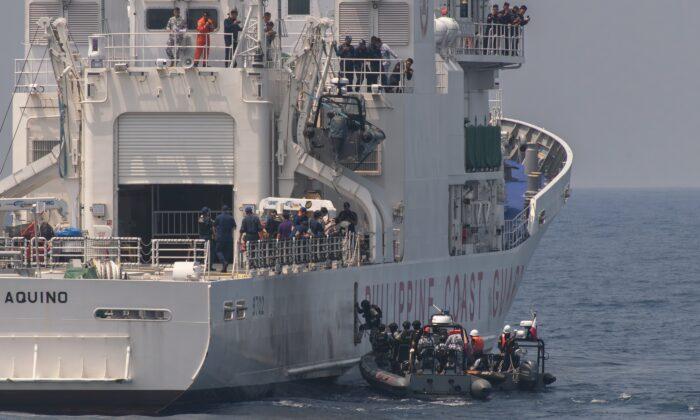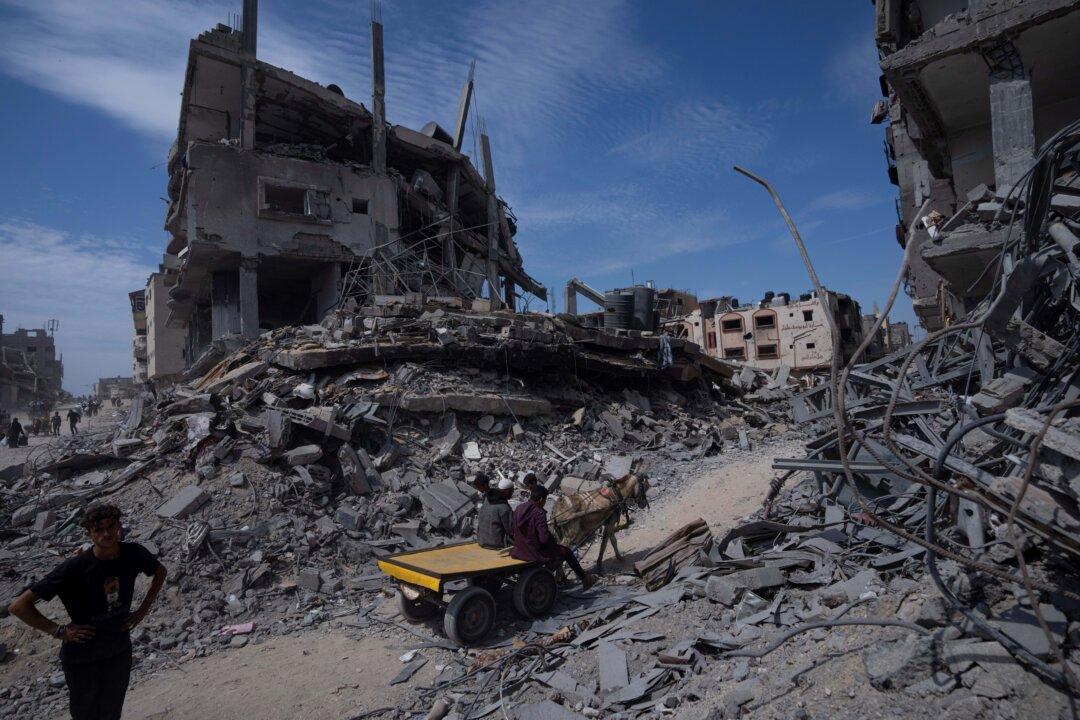The coast guards of the United States, Japan, and the Philippines conducted their first trilateral maritime drills in the South China Sea to strengthen defense cooperation amid China’s growing assertiveness.
The Philippines Coast Guard (PCG) deployed four vessels to the trilateral exercise, while the U.S. and Japanese coast guards deployed two ships—the USCG Cutter Stratton and Akitsushima.
“This first trilateral engagement between the coast guards of these nations will provide invaluable opportunities to strengthen global maritime governance through professional exchanges and combined operations,” Capt. Brian Krautler, the Stratton’s commanding officer, said in a statement.
“Together, we’ll demonstrate professional, rules-based standards of maritime operations with our steadfast partners to ensure a free and open Indo-Pacific.”
The drills seek to strengthen interoperability through communication and maneuvering exercises, as well as maritime law enforcement training, search and rescue, and passing exercises, Japan’s coast guard said in a statement.
Kenichi Matsuda, interim charge d'affaires at the Japanese Embassy, said his nation “will concretely advance cooperation with the Philippines to bolster maritime security capabilities and freedom of navigation.”
PCG spokesman Armand Balilo said Australia will participate as an observer in the trilateral exercises. He clarified that the drill isn’t directed against China or other claimants of the South China Sea.
“This is a usual routine activity among coast guard agencies,” Balilo told reporters on June 1. “There is nothing wrong with holding exercises with your counterparts.”

Quadrilateral Defense Talks
On June 3, the defense ministers of the United States, Japan, the Philippines, and Australia held their first quadrilateral talks on the sidelines of the Shangri-La Dialogue defense summit in Singapore.According to Japan’s Defense Ministry, the defense ministers discussed “regional issues of common interest and opportunities to expand cooperation,” without elaborating further.
“Also, they affirmed that they share a vision for a ‘Free and Open Indo-Pacific’ and collectively make efforts to ensure the vision continues to thrive,” the ministry said in a statement.
During the summit, Philippine Defense Secretary Carlito Galvez said that “the primacy of the rule-of-law” must be upheld with “continued pursuit of dialogue and multilateralism” to maintain peace.
Galvez urged all parties to express support for the 2016 South China Sea Arbitration Award in order “to preserve the global order at sea and uphold the universally recognized principles of international law,” according to the Philippines’ Defense Ministry.
Beijing’s claim of sovereignty over almost the entire South China Sea was invalidated by an international arbitration ruling in 2016, but the ruling didn’t see the Chinese Communist Party (CCP) change its behavior.
Defense Secretary Lloyd Austin said the United States seeks to strengthen ties with the Philippines “in every way possible” and is willing to help modernize Philippine military capabilities.
“We conduct more than 500 defense engagements together every year,” Austin told reporters after meeting with Galvez in Manila on Feb. 2.
“And as President [Joe] Biden has made clear, America’s commitment to the defense of the Philippines is ironclad.”
The Philippines and the United States are allies under the 1951 Mutual Defense Treaty, which dictates that the two nations will defend each other if either is attacked.






Friends Read Free